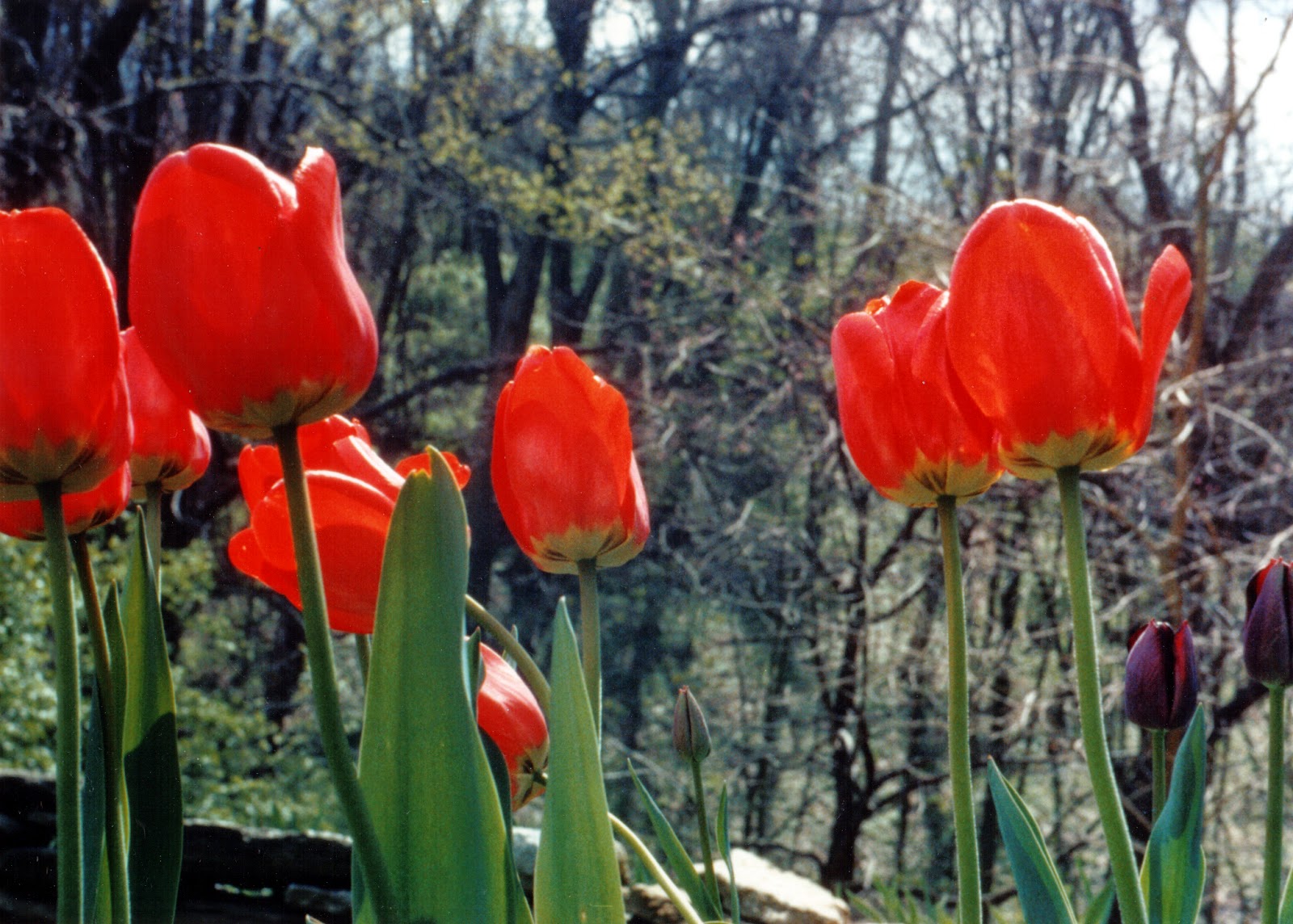For those
subscribers to my blog who are experiencing the snow and chilling winds of
winter, views of flowers might come as a welcome surprise. One of my cherished
memories of my grade school years is walking home from the school, which stood
across the road from our house. My route led down our driveway. My mother, who
loved blossoms of all kinds, had planted spring bulbs along the graveled path that
the 1957 pink two-door Bel Air Chevrolet followed to its parking spot. As the
school year was drawing to a close, the sunny afternoons between the April
showers found me striding past the profusion of hyacinths, daffodils, and
tulips that my mother had crowded into a deep border. The petals nodding in the
breeze invited me to slow my steps so as to pay closer attention.
 |
| My Tulips Proclaiming the Return of Spring |
I bent
close to the hyacinths to enjoy their perfume. Such heavenly scent! Closing my
eyes and smiling, I caught the delicate fragrance of the tulips. Each kind of
tulip possessed its own exquisite bouquet. I don’t expect anyone else to
understand this, but I connected the tulip scents with marshmallow Easter egg
candies.
To this
day, I can see in clear detail my grade-school self standing among the flowers.
I am wearing my gray zippered jacket and my blue stocking cap. A book is in my
left hand. The daffodils and tulips have diverted me from my walk to the house;
I stand among the blossoms. Later, in the hot summer months, this border beside
the white board fence will be in dappled shade, but now, in the pastel spring,
the leaves to be are merely buds, and the twigs and branches of the trees cast
no deep shadows. What a pleasure it is to take the measure of the renewed
world! By patiently burying bulbs in cold, blustery November, my mother had
planted wonder and delight to flourish when a child’s soul most needed them
after the winter months of lessons and tests.
At about
the same time, my mother ran the incubator in the enclosed breezeway between
the old smokehouse and our home. Chicks and ducklings hatched from the eggs she
had patiently candled, turned, and warmed. One of her favorite games was to
bring a newly hatched duckling to wake me up for school. I would gradually
relinquish the dream world while listening to the peeping of a duckling that
Mom was holding close to my ear.
As my
mother had taught elementary school before raising a family, she felt a special affinity for teachers and students, and she always invited a few of the grade
school teachers to lead their classes across the street to file through our
breezeway while learning about incubators and new life fluffing itself among
broken shells.
Although I
have loved every period of my life, my grade school years occupy a special
place in my estimation, and the flowers of the springtime are the hallmarks of
my memory.
Wherever I
have lived, I have planted bulbs. No matter how tiring it is to prepare the
soil bed for the bulbs, to orient them in the right direction, and to cover
them with soil that, by November, has begun to turn cool to the hand, I return
to the job of planting bulbs. They are the promise of the days and the blooms
to come. They are the symbols of my connection to the earth and my potential
for surprise. They are the responsibility I have to the arts inspired by
nature. By planting bulbs, I acknowledge that I am a steward of the earth and a
practitioner of its grace, its elegance, and its charm. When I am treated to
the first daffodil blossoms of the spring, I feel the peace of symmetry between
plant and planter.




